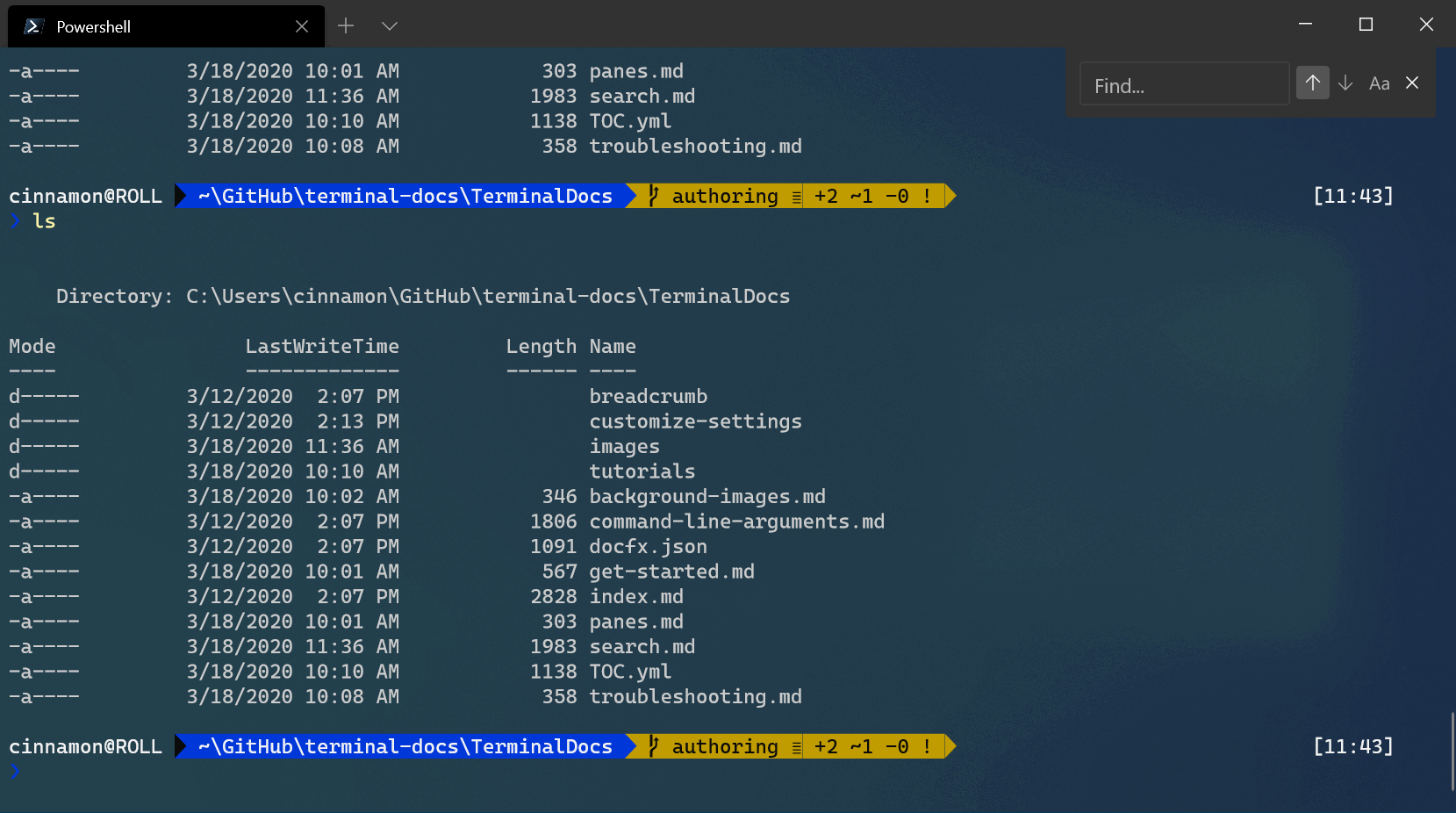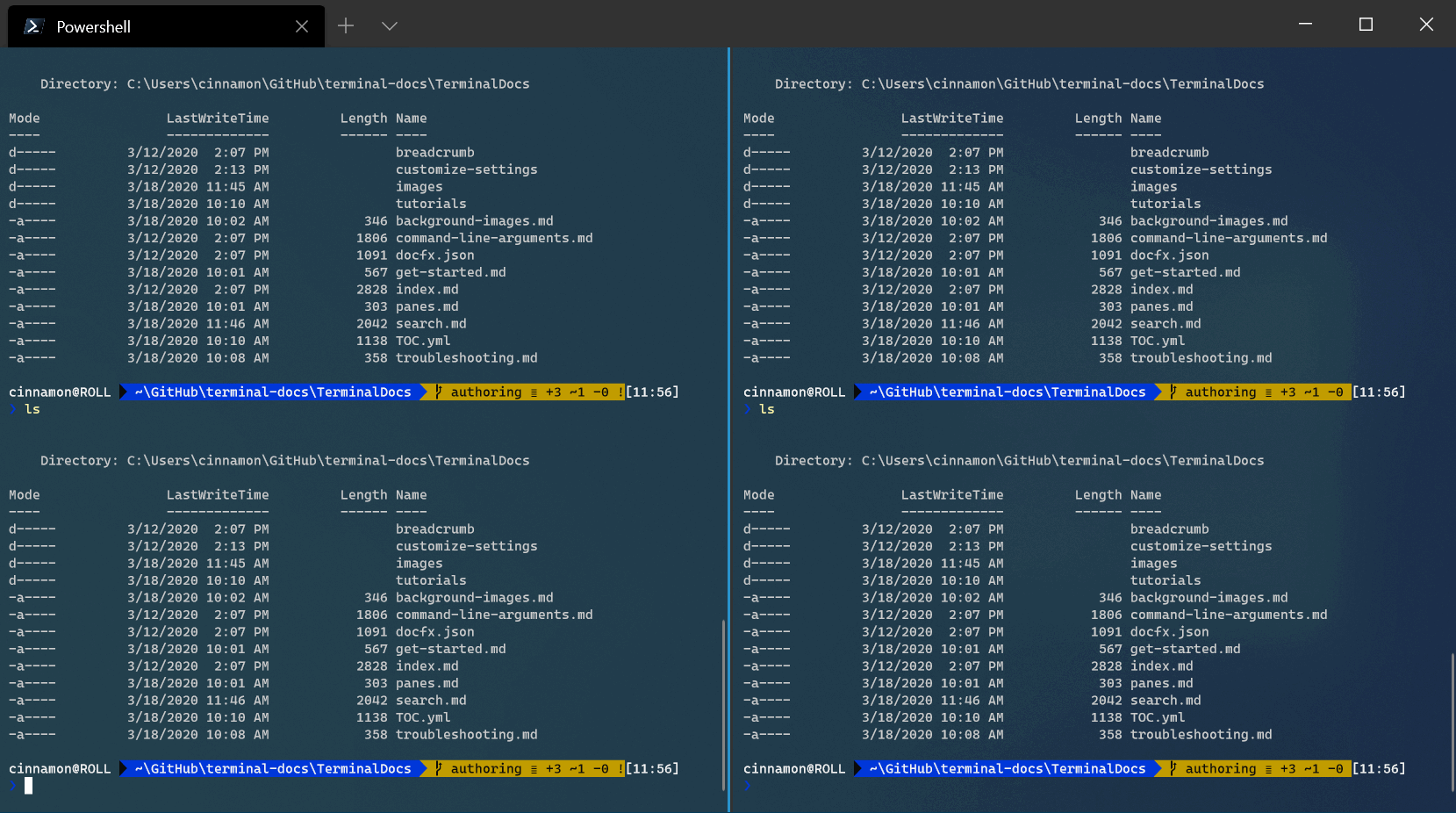Note
Access to this page requires authorization. You can try signing in or changing directories.
Access to this page requires authorization. You can try changing directories.
Windows Terminal includes a search feature that lets you look through the text buffer for a specific keyword. This feature is useful when you want to find a command you ran earlier or a specific file name.
Using search
By default, you can open the search dialog by typing Ctrl+Shift+F. When the dialog opens, type the keyword you're looking for into the text box and press Enter to start the search.

Directional search
The terminal searches from the bottom to the top of the text buffer by default. You can change the search direction by selecting one of the arrows in the search dialog.

Case match search
To narrow down your search results, add case matching as an option in your search. You can toggle case matching by selecting the case match button. The results that appear only match the keyword entered with its specific letter casing.

Searching within panes
The search dialog works with panes as well. When you focus on a pane, you can open the search dialog, and it appears on the upper-right of that pane. Then, any keyword you enter only shows results found within that pane.

Customize the search key binding
You can open the search dialog with any key binding (shortcut key combination) that you prefer. To change the search key binding, open your settings.json file and search for the find command. By default, this command is set to Ctrl+Shift+F.
// Press ctrl+shift+f to open the search box
{ "command": "find", "keys": "ctrl+shift+f" },
For example, you can change "ctrl+shift+f" to "ctrl+f", so when typing Ctrl+F.
To learn more about key bindings, visit the Actions page.
Windows Terminal
